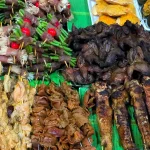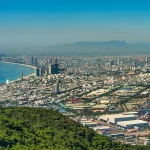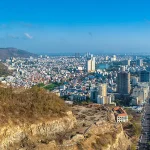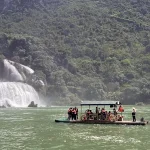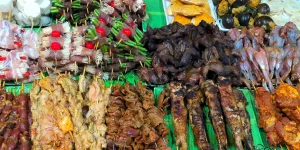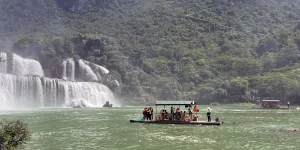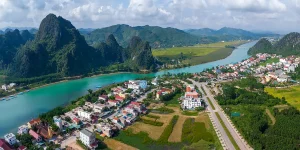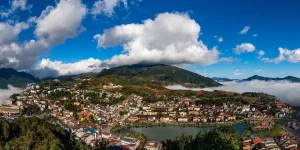Planning a trip to Vietnam is an exciting adventure, and we’re thrilled to help you make it unforgettable. In this guide, we’ll explore the best time to visit Vietnam, breaking down its seasons, highlighting the pros and cons of high season, and diving into regional differences.
We’ll also pinpoint the ideal months for iconic destinations like Halong Bay and Sapa, plus cover major cultural celebrations that could shape your journey. Finally, a month-by-month weather breakdown will give you full clarity.
Let’s get started!
Table of Contents
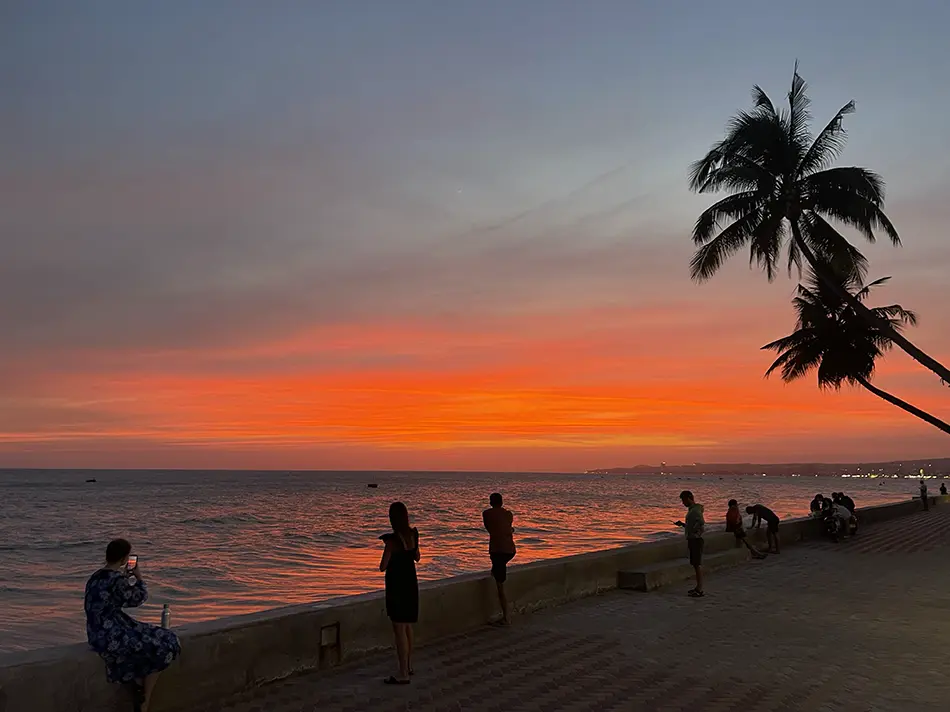
When Is High Season in Vietnam?
Vietnam’s high tourist season runs from November to February and is widely considered a great time to visit thanks to cooler temperatures and lower rainfall. But weather patterns vary across the country — and not every destination shines during this period.
The South (Ho Chi Minh City, Mekong Delta, Phu Quoc) offers warm, dry, and sunny weather — perfect for beaches and outdoor exploring.
Central Vietnam (like Hoi An and Da Nang) starts drying out in January but can still be cloudy, especially in December. It’s a transitional period, not yet peak sunshine.
Northern cities such as Hanoi are cool and dry — ideal for cultural visits. However, Halong Bay is often foggy and overcast in winter, which can limit views and reduce the appeal of a scenic cruise — yet many tour companies will market this as a “mystical and atmospheric” experience.
Far northern mountain areas (like Sapa and Ha Giang) are cold, damp, and sometimes frosty — not ideal unless you’re prepared for wintry conditions. Da Lat, in the Central Highlands, is dry but chilly, better suited for hiking than sunbathing.
Shoulder Seasons in Vietnam
March to April and September to October are popular shoulder seasons with fewer crowds and generally pleasant weather — but regional conditions vary.
March and April bring warm, dry days across most of the country. It’s a great time to explore Northern Vietnam (like Hanoi, Ninh Binh, and Halong Bay), hike in the northern mountains, or enjoy sunny beach days along the Central Coast in places like Hoi An, Da Nang, and Hue. The South stays hot and dry — ideal for visiting Ho Chi Minh City or relaxing in Phu Quoc.
September and October bring cooler, comfortable weather to the North — perfect for trekking in Ha Giang or cruising through golden rice fields in the countryside.
However, coastal cities in Central Vietnam — especially Hoi An, Da Nang, and Hue — face peak typhoon season in September and October, with increased risk of heavy rain, flooding, and travel delays. Inland destinations like Da Lat in the Central Highlands are far less affected and can be a better choice during this time.
Low Season in Vietnam
The low season runs from May to August, coinciding with the wet season in both the North and the South. Expect hot, humid weather with frequent afternoon showers, especially in places like Hanoi and the Mekong Delta. While travel is still very possible, outdoor plans may be disrupted by sudden downpours.
This period is ideal for visiting Central Vietnam’s beach towns, particularly Da Nang, which enjoys its sunniest months from May to July. Nha Trang and Quy Nhon also experience dry conditions during this time, though increased cloud cover in August may affect sunshine levels. It’s a popular summer holiday window for domestic tourists — so expect lively beaches, especially in July and August.
While much of Vietnam is hot and humid during the low season, mountain regions in the far North, like Sapa, Ha Giang, and Mu Cang Chai, offer a cooler escape. These months bring lush green landscapes, dramatic rice terraces, and occasional clear days between rain showers. It’s a beautiful time for trekking — just be prepared for muddy trails and pack rain gear, as afternoon downpours are common.
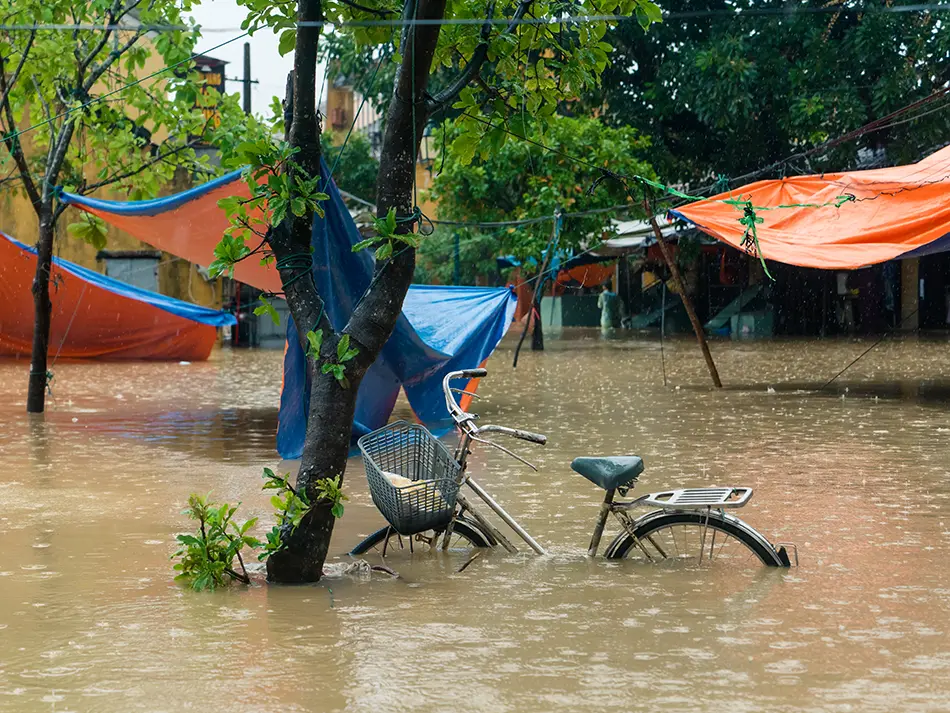
Typhoon Season in Vietnam – What You Need to Know
Vietnam’s Central Coast may be dreamy, but from late August to October, it occasionally comes with a twist: typhoon season. These tropical storms primarily affect Central Vietnam — especially Hue, Da Nang, and Hoi An — but can also reach the North, including Halong Bay. They bring heavy rain, wind, and potential travel delays.
Is it dramatic every year? Not always. Some years pass with barely a breeze. Others? Streets flood, tours get canceled, and your beach plans might turn into a cozy hotel day.
If you’re planning a trip between August and October, here’s what you should know:
- Storms move fast — You might get two sunny days and one wild one. Be flexible.
- Transport can be disrupted — Delayed trains, canceled flights, rerouted buses.
- Flooding happens — Especially in Da Nang, Hue and Hoi An’s old town streets.
Typhoon season isn’t a dealbreaker — but it’s definitely a planning point. If you’re chasing sun and surf, aim for June–early August on the Central coast or December–April in the South instead.
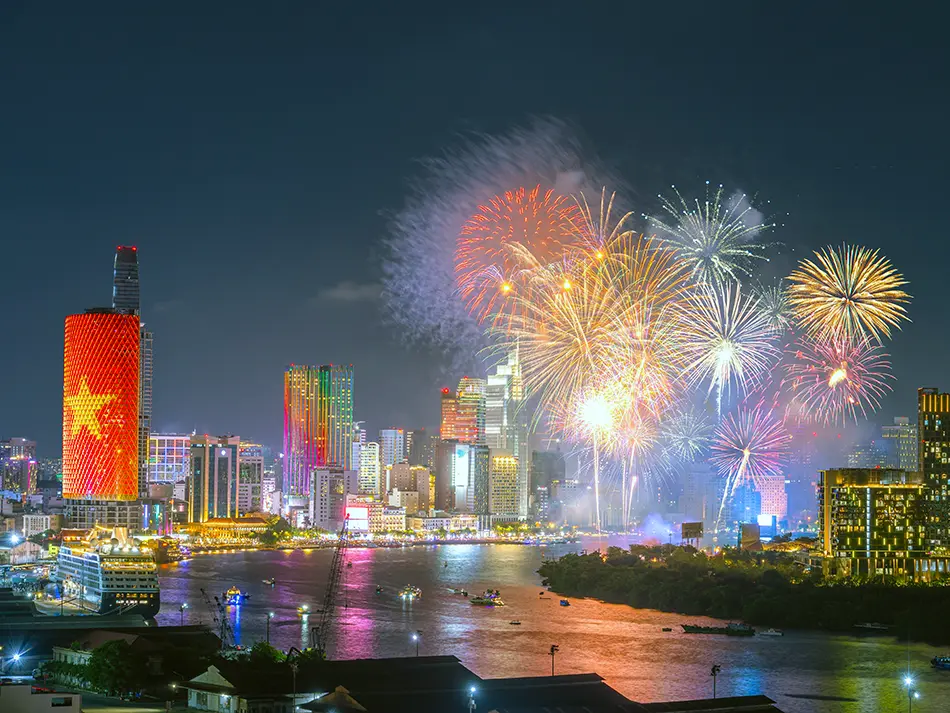
Vietnam’s Biggest Celebrations
When deciding on the best time to visit Vietnam, most travelers consider weather first — but seasonal festivals and public holidays can be just as impactful. Celebrations bring color, tradition, and unforgettable local experiences, yet they can also affect transportation, accommodation availability, and opening hours. For some, this adds charm and authenticity; for others, it creates logistical headaches.
Some holidays last only a day, while others—like Tet—can shape the travel landscape for weeks. Streets light up with parades, markets overflow with flowers and food, but buses sell out quickly, and many local businesses temporarily close.
Major events
- Tet (Lunar New Year, January or February): The biggest holiday in Vietnam. Expect colorful markets, family gatherings, and dragon dances. Many businesses close for up to a week, and domestic travel peaks right before and after.
- Reunification Day & Labor Day (April 30 – May 1): A major public holiday pairing two events. Locals take advantage of the time off to travel, so transport and beach towns are often fully booked.
- Hue Festival (Every April or May of even-numbered years. Next in 2026): A major cultural celebration held in Hue, featuring traditional performances, art installations, and international guests. It draws large crowds and raises hotel prices in the region.
- Mid-Autumn Festival (celebrated in September or early October): Celebrated nationwide with lion dances, lantern processions, and mooncakes. Especially magical in cities like Hoi An, Hanoi, and Hue. A favorite for families, but expect busy streets and booked-out stays.
- National Day (September 2): A patriotic holiday with parades, fireworks, and domestic travel surges. Coastal and highland destinations can get crowded around this time.
Check out our full list of Vietnam Festivals and Celebrations for more info on the unique experiences this country offers.
Month-by-Month in Vietnam: Weather Breakdown
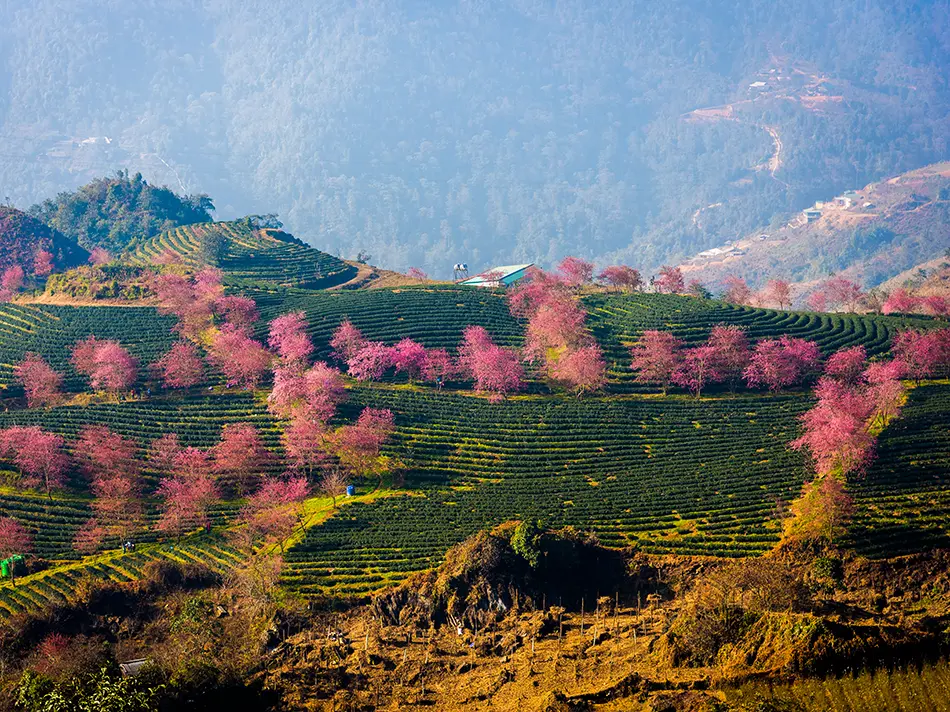
Vietnam in January – What to Expect from the Weather
January is a popular month to visit, with dry, cool conditions across much of the country. The North is crisp and mostly dry — ideal for Hanoi city strolls and cultural sightseeing. However, Halong Bay can be foggy and chilly, which affects visibility. In the northern highlands like Sapa and Ha Giang, expect cold temperatures and limited views. The Central Coast (Da Nang, Hoi An) is mild and relatively dry, though still transitioning out of its rainy season. The South (Ho Chi Minh City, Mekong Delta, Phu Quoc) offers the best conditions — warm, dry, and perfect for beaches.
Special in January: Tet flower markets bloom nationwide.
How Is Vietnam in February? Travel Weather Overview
February sees improving weather in most regions. The North remains cool with a chance of clearer skies, great for Hanoi and cultural sites, though fog may still linger in mountainous areas like Sapa. Halong Bay becomes more appealing toward the end of the month. The Central Coast begins to dry up, offering increasingly sunny days. The South continues to shine, making it a prime month for Phu Quoc and Con Dao.
Special in February: Cherry and plum blossoms begin to bloom in the northern hills, adding color to the cool landscapes.
Is It Worth Going to Vietnam in March?
March is one of the best months to visit Vietnam. The North is dry, mild, and ideal for both city visits and treks. Halong Bay skies clear up, and Sapa becomes more comfortable. The Central Coast (Hoi An, Da Nang) enjoys sunshine and warmth, making it great for sightseeing and the beach. The South remains hot and dry — perfect for outdoor adventures or island-hopping.
Special in March: Central Vietnam’s coffee regions burst into bloom — ideal for scenic routes around Buon Ma Thuot or Dalat.
What Is the Weather Like in Vietnam in April?
April offers good travel conditions across all regions. The North begins to warm, but remains mostly dry. Halong Bay and Ha Giang are in great shape. The Central Coast stays sunny and beach-ready. The South remains hot but dry — perfect for Mekong trips or coastal getaways before the rains arrive.
Special in April: Historical reenactments and cultural performances take over Hue’s imperial sites during the biennial Hue Festival (eld every two years next one is in 2026).
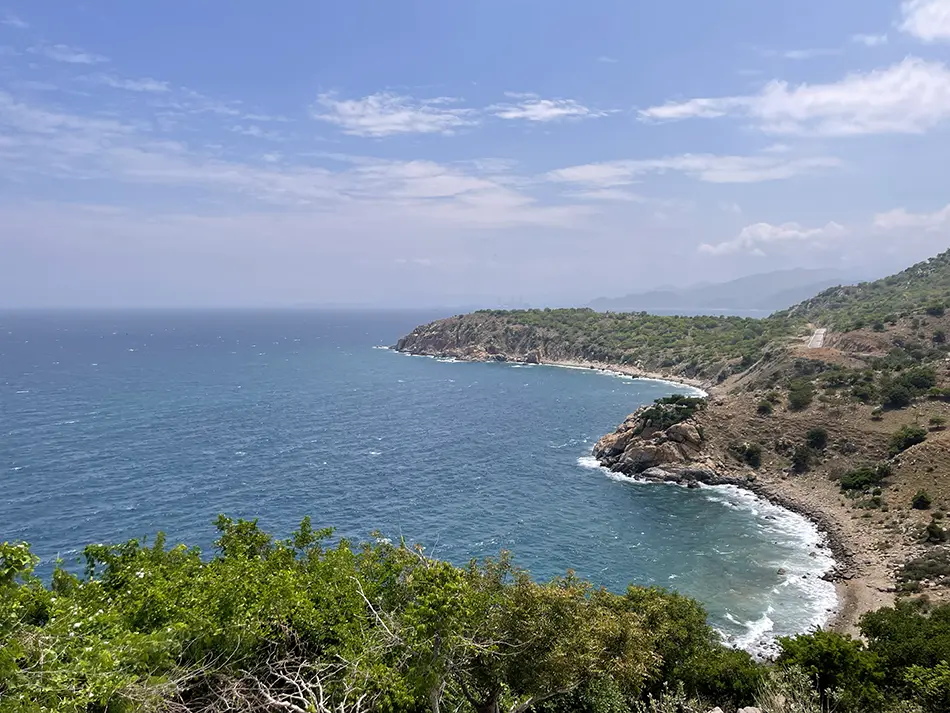
Is It a Good Idea to Visit Vietnam in May?
May marks the start of the low season. In the North, the first rains arrive, but landscapes turn lush — good for photographers and trekkers. Central Vietnam (Da Nang, Nha Trang, Quy Nhon) still enjoys sunshine, drawing beachgoers. The South begins its rainy season, with occasional afternoon showers and growing humidity.
Special in May: Southern orchards burst into harvest, with tropical fruits like durian and rambutan in full swing.
Vietnam in June – Weather Advice
June brings heat and rain to the North and South, with frequent afternoon showers. Sapa and Ha Giang become vivid green, but trails can be slippery. The Central Coast stays mostly dry, making Da Nang, Hoi An, and Nha Trang ideal for summer holidays. Expect higher humidity and fewer crowds.
Special in June: Central markets are rich with seafood and summer fruits — great for culinary-focused trips.

How Is the Weather in Vietnam in July?
July is deep into the wet season for both the North and South, with heavy showers and high humidity. Treks in Sapa or Ha Giang are not ideal due to mud and poor visibility. Central beach towns remain sunny, offering the best conditions for coastal travel.
Special in July: Lanterns glow over Hoi An’s river every full moon — especially striking during summer evenings.
Is It OK to Travel to Vietnam in August?
August continues with high rainfall in the North and South, along with typhoon risks. However, Central Vietnam starts to experience the beginning of typhoon season in late August, with rising storm risk. Expect hot, humid days and fewer international visitors — a good time for deals.
Special in August: Southern rice paddies turn deep green before the harvest — a beautiful contrast for rural photographers.
What to Expect from Vietnam’s Weather in September?
September brings mixed conditions. The North cools down and dries out — great for trekking and golden rice fields in Sapa and Mu Cang Chai. The Central Coast begins its storm season with increased rain and typhoon threats. The South remains rainy, but storm intensity starts to ease.
Special in September: Mid-Autumn Festival fills cities like Hanoi and Hoi An with lanterns, mooncakes, and family celebrations.
How Is Vietnam in October for Travel?
October is one of the best months to visit the North, with dry air, blue skies, and golden rice terraces in Ha Giang. The Central Coast, however, is at high risk of typhoons and flooding — not ideal for beach travel. The South sees the last of its rains and starts transitioning to dry season.
Special in October: Ha Giang’s buckwheat flower season begins, carpeting valleys in soft pink.
Vietnam in November – Weather Conditions and Travel Tips
November is a top travel month. The North is cool and clear — great for city exploration and mountain road trips. The Central Coast may still face occasional showers but generally improves. The South shifts into its dry season, reopening beach resorts in Phu Quoc and Con Dao.
Special in November: Harvest festivals and local markets pop up in Central and Northern villages, giving a glimpse into rural life.

Is It Worth Visiting Vietnam in December?
December offers great conditions in the South, with sunny skies and cooler evenings — perfect for beach getaways. The North is dry but chilly, especially at night in Hanoi and Sapa, where fog can return. The Central Coast slowly dries out, though rain is still possible.
Special in December: New Year decorations and local celebrations bring festive energy to Ho Chi Minh City and major beach towns.
Now You Know the Best Time to Visit Vietnam
We hope this guide has clarified not only the best time to visit Vietnam but also the unique benefits of shoulder and low seasons, even with their challenges.
Whether you’re drawn to Halong Bay’s turquoise waters or Sapa’s golden terraces, understanding Vietnam’s seasons will help you plan a seamless trip.
From all of us at Guides and Stories, we wish you smooth preparations and an incredible adventure!

